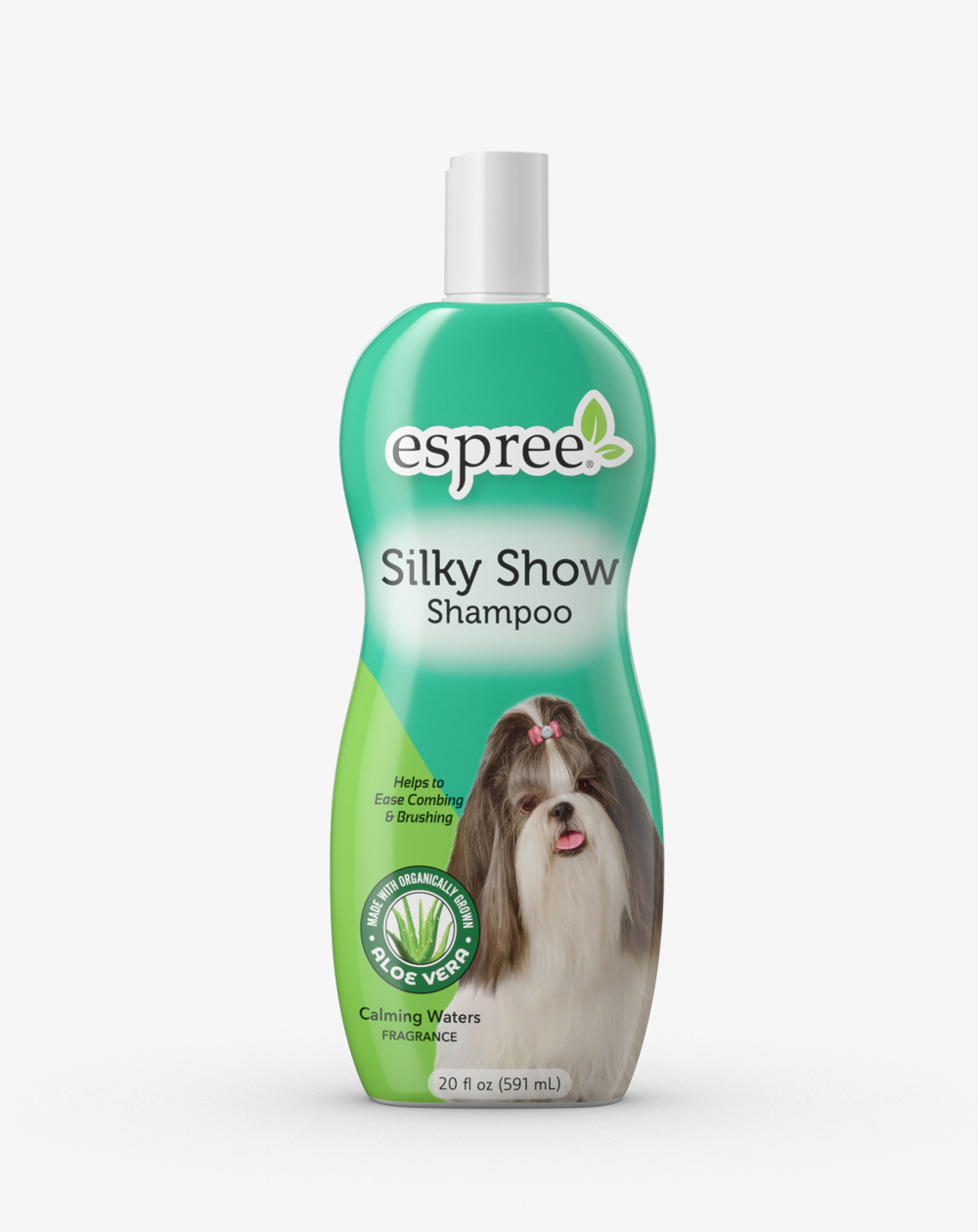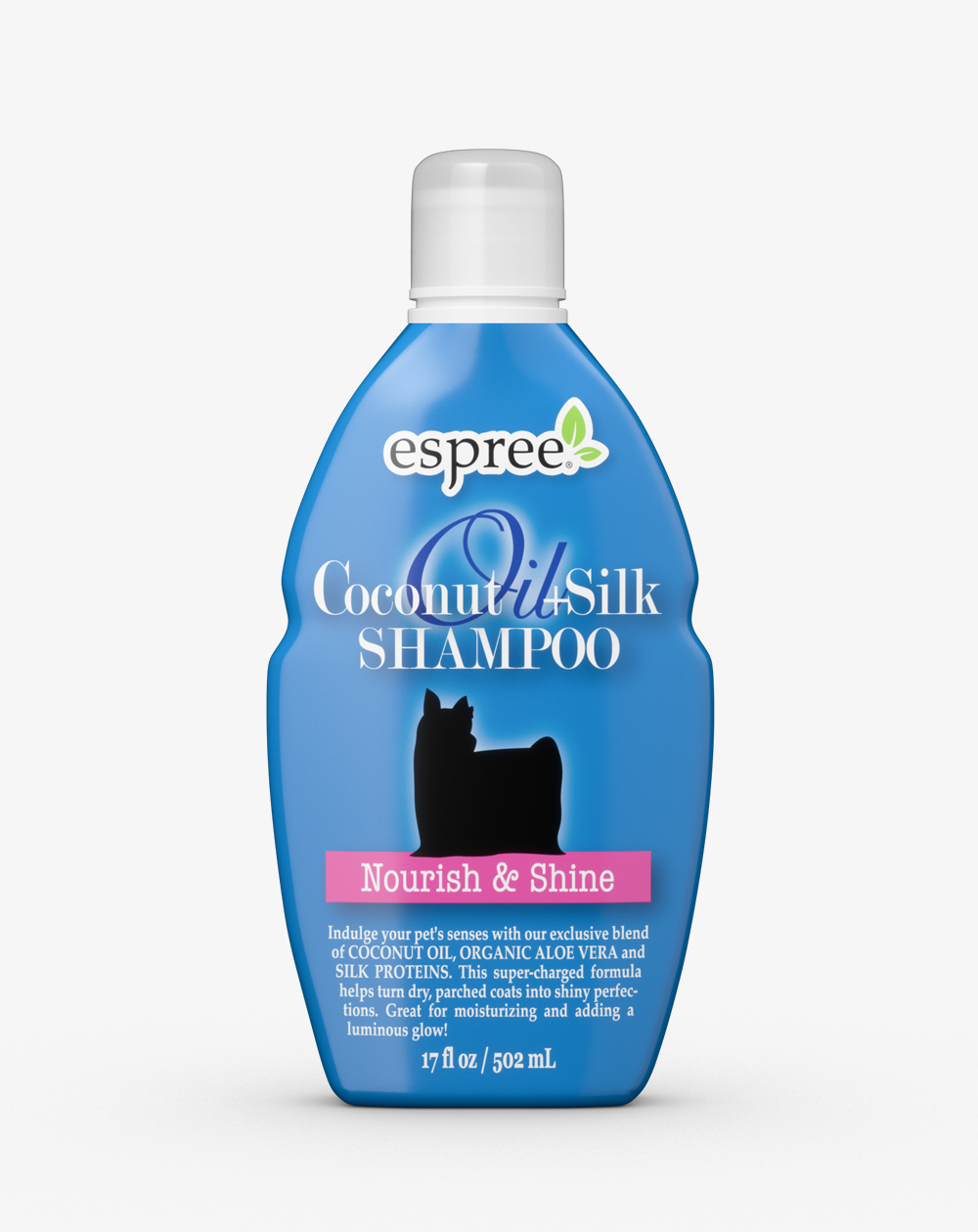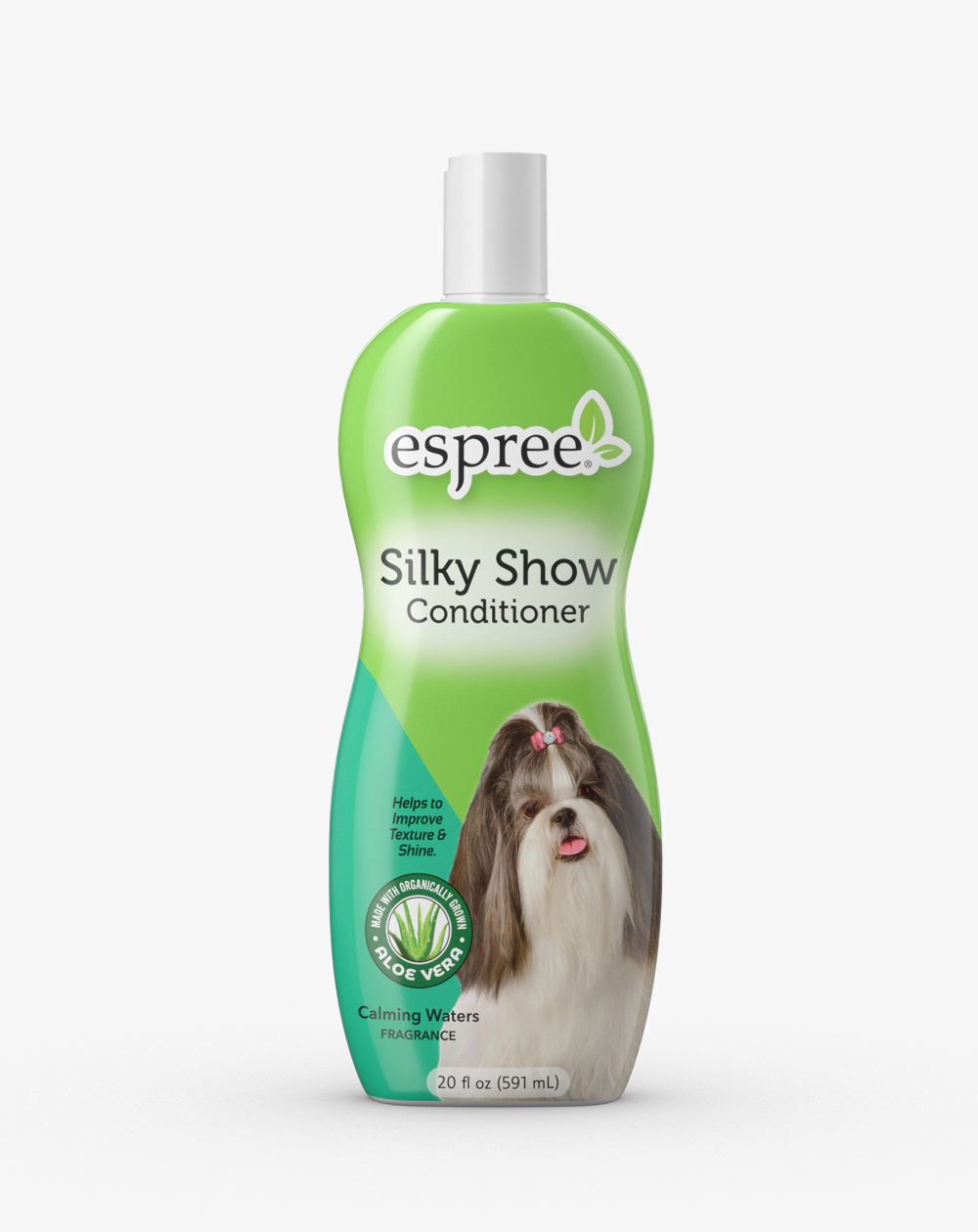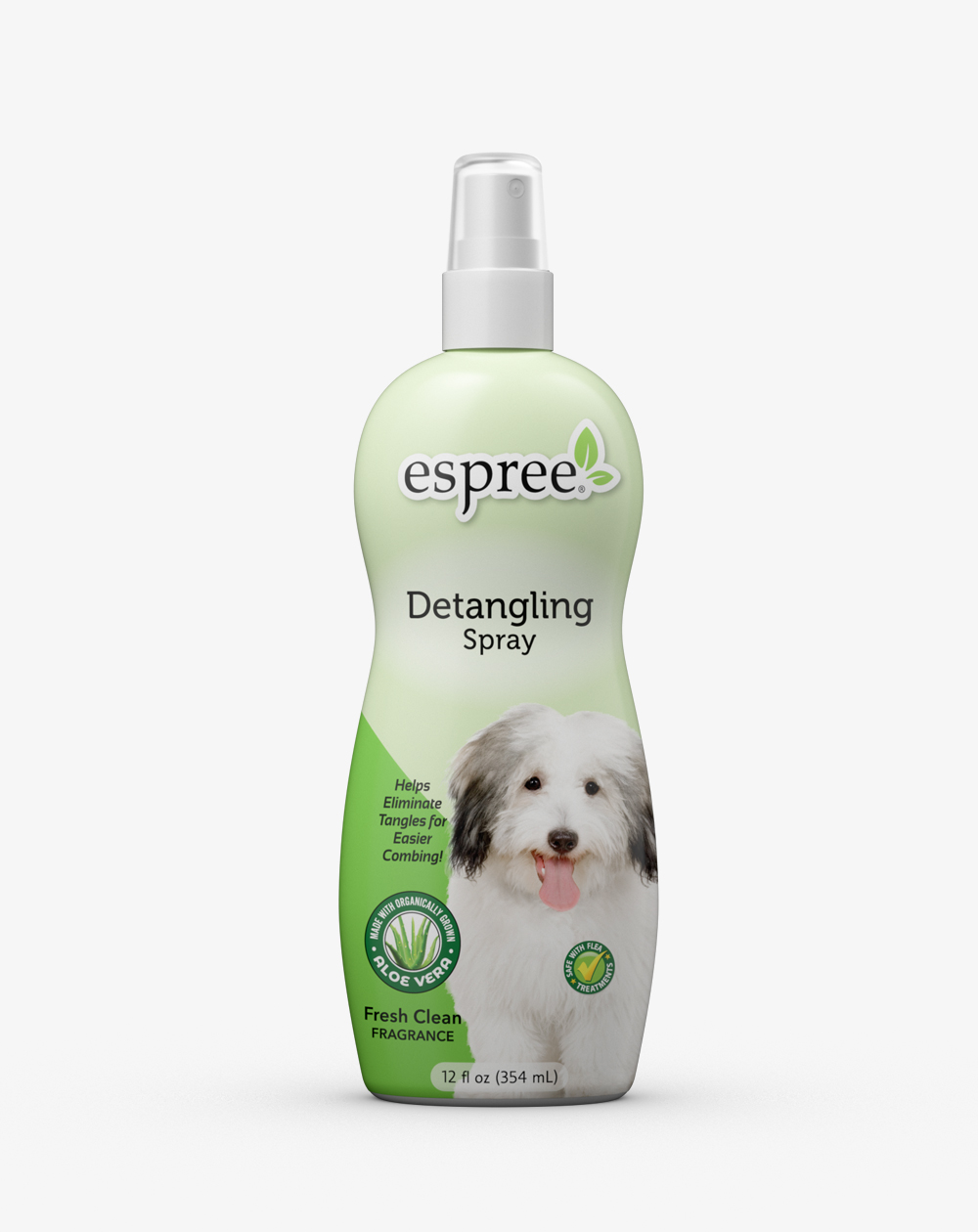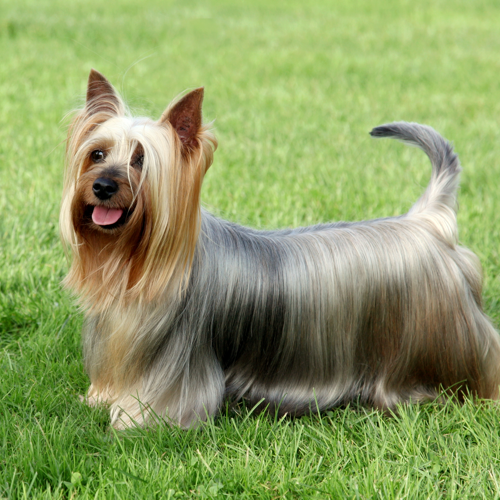
Silky Terrier
Although a toy in size, the Silky Terrier has a true terrier personality – he is of sufficient substance to be able to hunt and kill domestic rodents. The general public occasionally confuses this breed with the Yorkie, but in reality, the Silky is larger and more closely related to the Australian Terrier. A friendly, joyful temperament and the lovely blue and tan coat make him an ideal companion.
Breed Profile
This portable pooch can adapt well to any living situation, but make sure you have the time to devote to them – they do not like to be ignored, preferring to play fetch or go on walks with their family. Silkies are keen and energetic, so it’s best to keep them occupied. The breed must also be bathed and brushed on a regular basis.
Grooming
The Silky Terrier does require regular bathing and brushing. Their coat is a single layer without any undercoat giving it a luxurious silky texture. A correct coat has a deep shine, it is cool to the touch, and it reflects light in the sunshine. This single layer coat closely resembles a human hair strand. Cleanliness is very important as dirty hair breaks easily and does not grow. In order to keep the coat and skin in good health, Silkies should be bathed and brushed out weekly or at a minimum every other week. Even if the Silky Terrier does not have the correct silk coat texture, choosing the right products and using them correctly can give the illusion of a correct coat.
When bathing a Silky Terrier, try to minimize further tangling. After the coat is wet, apply a moisturizing shampoo by squeezing it through the coat in a downward motion. In order to get the coat squeaky clean, continue to move the shampoo down the coat. Thoroughly shampooing the coat will contribute to building a healthy, strong, and manageable coat. The same technique is used when conditioning the coat. It is imperative that you condition the coat in order to lock in the moisture on each individual strand of hair. Make sure you thoroughly rinse the coat. It is a good idea to slightly cool the water temperature down for the final rinse to ensure the coat is completely free of any product. Once the bath is finished, blot the coat with a towel and squeeze any excessive water from the coat. Always use a downward motion to remove excess in order to keep the coat from further tangling.
It is best to systematically line dry the dog using a fluff dryer or a stand dryer if the Silky has a long coat. Make sure the area that you are working on is completely dry all the way down to the skin before you move onto the next section. Once the Silky is completely dry, make sure the coat is also tangle free. Double check your brush out by using a metal comb.
Finishing the Dog: Tools and Finish Grooming
The coat should be free of mats and tangles. The coat on this self-confident little dog should be light and airy, while hanging straight and moving freely with the dog. Lightly neaten the entire outline of the dog, removing any stray hairs that interrupt the natural flow of the dog. The body should be trimmed following the outline of the body including the tuck up in the loin. The hair is always trimmed so it is slightly off the ground. Using clippers, remove the hair on both the front and back of the ear. Trim the edges with scissors to neaten. Use thinning shears to trim the eyes making an upside “V” between the corner of each eye to the part between the ears. Then use thinning shears to lightly trim the eyes to open it up and show off the beautiful eyes. The tail is easily done by placing 2 fingers on the tail bone and cutting all of the hair that goes past your fingers. Remember the tails are not meant to look like a flag.
General Health Care
Prep work is the foundation of all grooming. Prep work includes ear cleaning, nail trimming, trimming the pads, anal glands, and proper dental hygiene. Master these skills sets the professional pet stylist apart from the rest. Prep work should be done before every bathing and grooming appointment. All dogs need to have their ears checked and cleaned on a regular basis. Some need to have the hair plucked from the ear canal. This allows the ear to have proper air circulation. It is not necessary to remove all of the hair in the ear, as some serves as a barrier to foreign debris. It is imperative that you are properly trained to pull ear hair before attempting this endeavor. Proper nail care is also very important. Long, unsightly nails are uncomfortable for the dog, as well as anyone they might jump on. Long nails also compromise the shape of the foot. Trimming the pads of the foot helps give the dog good traction on different surfaces and can minimize the amount of dirt the dog tracks into the house. It also affords the opportunity to treat and condition the paws from cracks and abrasions. Anal glands should also be checked and expressed if they are full. Some caring pet owners prefer to have the anal glands done by their veterinarian. Good dental hygiene is essential for a healthy pet as well.
Nutritional Care
In order to maintain healthy skin and coat as well as overall health, it is important to provide good nutrition to your dog through a well-balanced diet, vitamins, and healthy treats.
Do they require a lot of grooming?
Silky Terrier’s do require routine grooming. As a young dog, it is imperative that you get the dog used to regular grooming. A full brush out 2 times a week is best with baths every 1 to 2 weeks. Never brush a dry coat, always lightly mist with a hydrating spray. If the Silky Terrier is kept in a shorter trim, weekly brush outs are still preferred. Routine baths ranging between 1 to 4 weeks is desirable. This is a breed that requires their caring owner to stay on top of routine maintenance.
What is a common problem in the Silky Terrier?
One of the most common problems with the Silky Terrier is hypoglycemia. It is more common in puppies and smaller Silkies. An adult Silky may develop hypoglycemia, although it is much rarer. Hypoglycemia is a fast drop in blood sugar levels. Just about every element of a puppy’s body depends on the proper balance of sugar in the bloodstream. When Hypoglycemia develops, there is only a small window of time to treat the puppy. Several factors can bring this on such as stress, lack of nutrients, and puppies who are born much smaller than average. Some symptoms include drowsiness, shaking, fainting, confused behavior, seizures, weakness, depression, muscle weakness and tremors, and a drop in body temperature. If any of these symptoms appear, your Silky could be in imminent danger within minutes. All small puppies should be watched very closely. If symptoms appear, immediate medical attention is required. It is a good idea to talk with your veterinarian about ways to prevent hypoglycemia when you take your puppy for a wellness check-up after purchasing your puppy.
Does the Silky Terrier shed or cause allergies?
Silky Terriers do not shed. Frequent baths and brush outs also help control dander. Because of this, the Silky Terrier tends to cause less severe reactions in people who suffer from allergies to dogs. However, before bringing a Silky Terrier into your home if you have allergies, you should spend some time around the breed to make sure you do not have a reaction.
Are Silky Terriers good with children?
A Silky Terrier is typically not the best dog for people who have small children. They tend to become stressed with the activity level of small children. Silkies thrive in an environment where the children are more mature or live primarily with adults.
What if I have a show dog?
Whether you have a show dog or a companion quality dog, the same basic care is given regarding nutrition, socialization, and hygiene. A major difference is the method of grooming that is required and the conditioning for the show ring. It is quite helpful if your breeder can help mentor you to lead you in the right direction upon entering the show ring. A great place to start is with the national breed club like the Silky terrier Club of America, www.silkyterrierclubofamerica.org.

